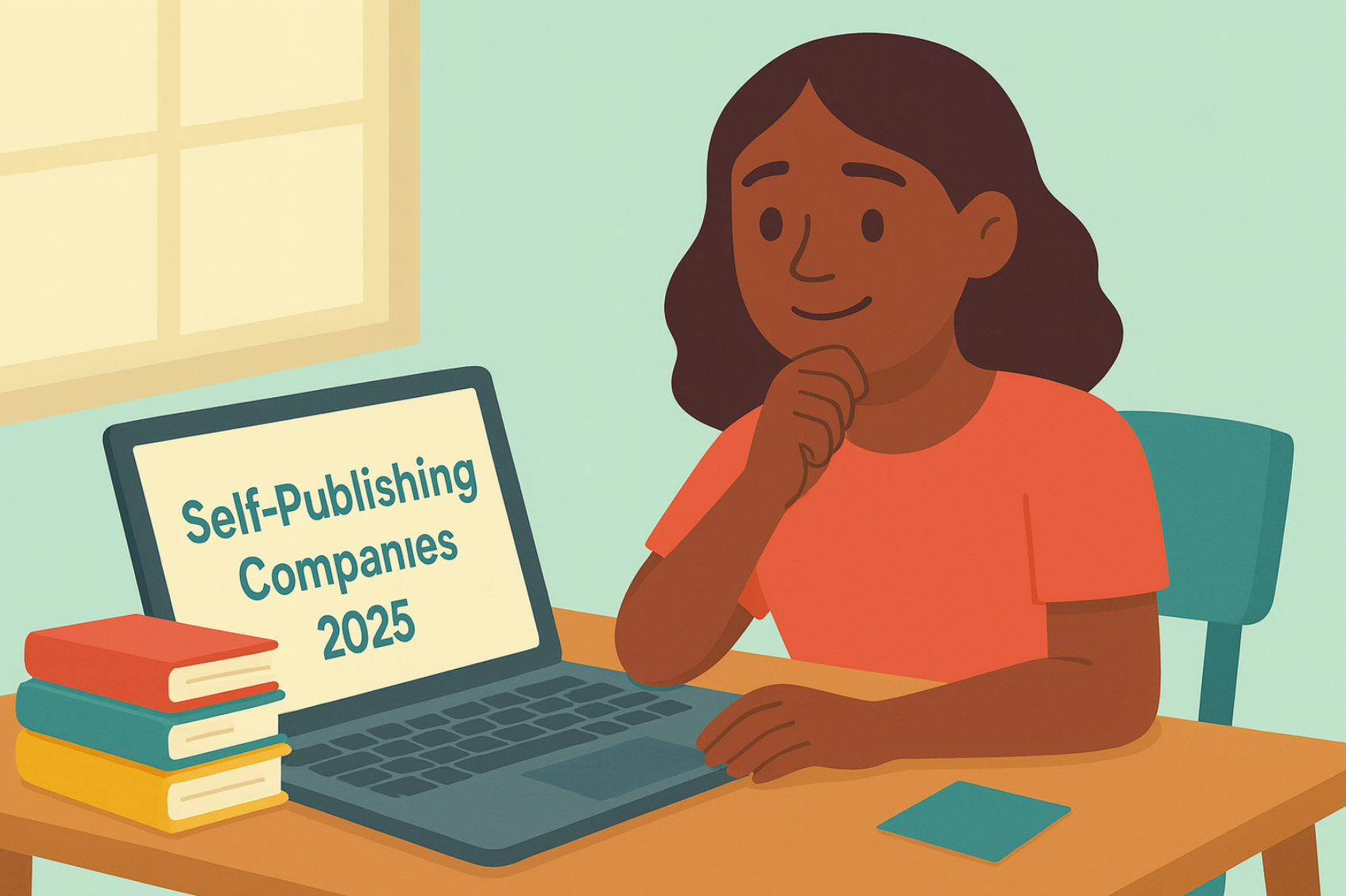In the enchanting realm of children’s literature, where vibrant illustrations merge with compelling narratives to capture the imaginations of young minds, the journey of a book from concept to reader has traditionally traversed the path laid by conventional publishers. This well-trodden route, characterized by its gatekeepers—literary agents and publishing houses—has long been the standard for authors aspiring to see their work in print. Yet, the landscape of children’s book publishing is undergoing a transformative shift, propelled by the democratizing force of self-publishing. This evolution presents both budding and established authors with new vistas of opportunity, alongside a unique set of challenges.
Self-publishing, in its simplest form, refers to the process by which authors publish their work independently, without the involvement of a traditional publishing company. This approach, which has existed in various forms for centuries, has been revolutionized by the advent of digital technology and the internet. The modern era of self-publishing began to take shape in the late 20th and early 21st centuries, with the rise of print-on-demand technology and online platforms that allow authors to directly reach their audience. In this new paradigm, authors retain complete control over the creative and selling process, from the design and layout of the book to the pricing and marketing strategies.
The children’s book sector, a vibrant segment of the publishing industry, is witnessing a significant rise in self-published titles. The reasons for this surge are manifold. Self-publishing offers a level of creative autonomy that is often unattainable in traditional publishing. Authors can tailor their stories, illustrations, and book formats to their vision, ensuring that the final product resonates with their intended message and aesthetic. Moreover, the barriers to entry are lower; there are no gatekeepers to appease, no protracted waiting periods for manuscript acceptance, and no compromise on artistic integrity to fit market trends dictated by publishing houses.
However, this freedom to self-publish also comes with its own set of responsibilities and hurdles. Self-published authors navigate the publishing process without the infrastructure and support system provided by traditional publishers. This includes undertaking or managing editing, design, illustration, formatting, and the intricacies of distribution and marketing—all of which demand a considerable investment of time, effort, and financial resources. The challenge of visibility and market saturation with self-publishing also looms large.
Despite these challenges, the allure of self-publishing in the children’s book domain remains strong. The potential for higher profit margins, direct engagement with readers, and the fulfillment of seeing one’s personal vision come to life in print form are compelling incentives. Furthermore, success stories of self-published children’s books breaking through to widespread acclaim and commercial success serve as beacons of possibility for aspiring authors.
Understanding the landscape to self-publish your children’s book, mastering the tools of the trade, and learning from those who have navigated this path successfully are essential steps toward turning the dream of publishing one’s own children’s book into reality. This exploration will equip aspiring children’s book authors with the knowledge and strategies needed to make informed decisions and harness the full potential of self-publishing, ensuring that their stories find their way into the hearts and minds of young readers around the world.
Your Publishing Journey Awaits – Start NowThe Appeal of Self-Publishing for Children’s Books
In the world of children’s books, where the synergy between text and illustrations is paramount, creative control stands as a cornerstone for authors who choose the self-publishing route. This control extends far beyond mere words on a page; it encompasses the entirety of a book’s essence, including its thematic depth, artistic style, and physical presentation. Such comprehensive dominion over the creation process is not just a matter of preference but a necessity for those who envision their stories in very specific, often unique, ways.
Children’s literature, by its nature, relies heavily on the interplay of visuals and narrative to convey messages, evoke emotions, and spark imagination in little readers. Through self-publishing, authors retain the freedom to select their illustrators—or illustrate their work themselves—ensuring that every page little readers turn is a reflection of their original vision. This harmony between text and art is crucial in children’s books, where illustrations do more than complement the story; they breathe life into it, making the narrative accessible and engaging for young readers.
Moreover, creative control extends to the book’s design and layout, aspects that can significantly impact a child’s reading experience. Self-publishing authors can make deliberate choices about typography, color schemes, and even the book’s size and shape, tailoring the physical book to suit the preferences and needs of their target audience. This level of detail can make a book more appealing to children, encouraging them to pick it up, leaf through it, and, ultimately, delve into the story.
The ability to oversee the entire creative process also means that authors can ensure cultural sensitivity, inclusivity, and the conveyance of values important to them. In a traditional publishing setting, editorial and marketing considerations can sometimes lead to changes that dilute an author’s original message or vision. Self-publishing, by contrast, allows authors to maintain the integrity of their work, ensuring that the final product is not only true to their vision but also resonates with the intended themes and messages they wish to impart to their young readers.
This unparalleled level of creative autonomy afforded to nonfiction books by self-publishing empowers authors to experiment with narrative structures, themes, and character development in ways that might not always align with mainstream publishing expectations. It opens up a realm where stories that diverge from conventional tropes or explore niche subjects can find a home, thereby enriching the tapestry of children’s literature with a broader diversity of voices and experiences. For aspiring authors passionate about bringing unique stories to life, self-publishing offers a platform where their visions can flourish unencumbered, allowing them to contribute meaningfully to the world of children’s literature and impact the lives of young readers in profound and lasting ways.
Speed to Market
One of the most compelling advantages of self-publishing children’s books is the speed at which authors can bring and self-publish, their stories from manuscript to marketplace. Traditional publishing is notorious for its lengthy timelines, writing books often stretching from months to even years from acceptance to publication. This slow pace is a byproduct of the many stages a book must pass through to publish, including rigorous rounds of editing, design consultations, marketing strategy meetings, and scheduling within the traditional publisher’s broader catalog of releases.
Self-publishing, in contrast, offers a streamlined path to market. Once an author completes their manuscript and accompanying illustrations, they can move directly into the production phase, retaining the autonomy to set their own deadlines for editing, design, and publication. This expedited process is not just about quicker gratification for the author; it’s about relevance and timeliness, particularly for books that might tie into specific events, seasons, or trending topics.
The rapid production cycle of self-publishing also allows authors to respond dynamically to the market. In the fast-evolving world of children’s interests and trends, the ability to quickly publish can be a significant advantage. Authors can capitalize on emerging themes or niches that traditional publishers, with their longer lead times, might miss. Furthermore, this agility enables self-published authors to build momentum through frequent releases, keeping their audience engaged and expanding their reader base with each new book published.
Higher Royalties
Economic considerations play a pivotal role in an author’s decision to self-publish, with the potential for higher royalties being a particularly attractive aspect. Traditional publishing contracts typically offer authors a royalty rate that is a percentage of the book’s sale price, often ranging from 5% to 15% for printed books published, and somewhat higher for ebooks. These rates are influenced by multiple factors, including the author’s leverage, the publisher’s size, and the specific terms of the contract. However, even at the higher end of this scale, the majority of the book’s revenue is absorbed by the traditional publisher, who covers the costs of production, distribution, and marketing.
Self-publishing, on the other hand, dramatically shifts this financial equation in favor of the author. Platforms for self-publishing, particularly print-on-demand services and ebook distributors, typically offer much higher royalty rates, sometimes up to 70% of the sale price. This substantial increase means that self-published authors can earn more per book sold, making it a lucrative option, especially for those who can effectively market their work and achieve substantial sales volumes.
It’s important to note, however, that self-publishing entails upfront costs that would typically be borne by traditional publishers, such as editing, design, and marketing expenses. Despite these initial investments, the higher per-unit royalties mean that successful self-published authors can potentially recoup their costs and achieve profitability more quickly than they might through traditional publishing routes.
Self-publishing offers children’s book authors unparalleled creative control, a faster path to readers’ hands, and the potential for greater financial rewards. These advantages make it an increasingly popular choice for self-publishers and among writers eager to bring their unique
Understanding the Self-Publishing Process
The foundation of writing any children’s book lies in writing its manuscript, a process that demands a deep understanding of young readers’ needs and a keen sense of storytelling. Writing for children involves more than simply choosing simpler words; it’s about crafting stories that resonate, teach, and entertain, often all at once. Begin with a clear concept that offers either a unique perspective, an engaging narrative, or a valuable lesson tailored to your writing and intended age group. Whether you’re writing a picture book with minimal text or writing a chapter book for middle-grade readers, clarity, rhythm, and a touch of whimsy can greatly enhance your narrative.
Creating and writing a draft is just the first step. Revising your manuscript involves fine-tuning the language, ensuring the story’s flow, and making sure the narrative is age-appropriate. Engage beta readers, such as educators, parents, and those who write and market children’s books, to gain insights into how your story is received and where adjustments may be needed. Additionally, professional editing is indispensable, even in self-publishing. An editor experienced in children’s literature can offer invaluable feedback on story structure, character development, and language use, helping polish your manuscript to professional standards.
Your Publishing Journey Awaits – Start NowIllustrating Your Book
In children’s books, illustrations are not merely decorative; they are integral to the narrative, often carrying as much of the storytelling as the text or picture book itself. For many young readers, pictures are what first draw them to a book, guiding them through the story and bringing the text to life. The right illustrations can set the tone, enhance the mood, and deepen the reader’s connection to the story.
Finding the right illustrator is a pivotal step. Options include hiring your own illustrator, or a freelance illustrator, purchasing stock illustrations, or, if you’re artistically inclined, creating the illustrations yourself. When selecting an illustrator, look for a style that complements your story’s tone and characters. Collaborating closely with your illustrator is key to ensuring the visuals accurately reflect and amplify your narrative. Remember, illustrations in children’s books do more than accompany text; they provide visual cues and context that support the developing literacy of young readers.
Choosing the Right Self-Publishing Platforms
Selecting a self-publishing platform is a critical decision that can influence your book’s visibility, accessibility, and profitability. For children’s picture books, particularly those with rich, colorful illustrations, the choice of platform will affect the quality of printed picture books and the distribution reach. Popular platforms like Amazon’s Kindle Direct Publishing (KDP) offer ease of use, wide reach, and the option for print-on-demand, making it a favored choice for many self-publishing authors. Print-on-demand services, such as IngramSpark and Blurb, are also well-suited for children’s picture books, offering high-quality color printing and broader distribution channels.
When comparing platforms, consider factors like royalty structures, printing costs, distribution networks, and support for various formats (e.g., hardcover, paperback, ebook). Some platforms may offer specialized services for children’s books, including interactive ebook formats, which can enhance young readers’ engagement. Weigh the benefits of exclusivity (selling through a single platform) against the potential reach of multi-platform distribution to determine the best strategy for your book.
The decision between exclusive and wide distribution is crucial, as it influences where and how your book will be available. Exclusive arrangements, such as Amazon’s KDP Select, can offer advantages like higher royalties in certain markets and promotional tools, but they restrict distribution to a single platform. On the other hand, opting for a wide distribution approach allows you to cast a broader net, making your book available through multiple retailers and thereby increasing your chances of discovery by a diverse audience. This approach can be particularly beneficial for children’s books, as it enables access to various markets, including schools, libraries, and international readers.
Additionally, the rise of digital platforms has introduced innovative publishing models that cater specifically to children’s content, offering features like animation, read-along audio, and interactive activities within digital books. These platforms can provide a more immersive reading experience, potentially increasing the appeal of your book to tech-savvy young readers and parents looking for engaging educational content. As the digital landscape continues to evolve, staying informed about new and emerging platforms that offer unique features for children’s books can give you a competitive edge, allowing you to utilize the latest technology to captivate your audience and enhance your book’s appeal.
Setting Up Distribution and Pricing
Distribution strategy plays a significant role in your book’s market penetration and sales performance. Most self-publishing platforms offer access to major online retailers, but expanding your reach to bookstores, libraries, and schools can significantly impact your book’s success. Consider using a distributor if your platform doesn’t automatically list your book in catalogs used by these institutions. Remember, each channel has its own requirements and discounts, so plan accordingly.
Pricing your children’s book requires a careful balance between covering costs, remaining competitive, and ensuring profitability. Research similar titles in your genre to understand market pricing norms. Factor in the costs of printing, especially for color illustrations, which can be higher. Ebooks typically carry lower prices but remember, digital formats for children’s books may not be as popular as print versions due to the tactile and visual appeal of physical books for young readers.
When setting up pricing, also consider the possibility of volume sales through school and local libraries and purchases, which may offer lower per-unit profits but can significantly increase overall sales. Additionally, promotional pricing strategies, such as temporary discounts or bundling books, can be effective ways to attract new readers and encourage reviews, building momentum for your title in a crowded market.
Marketing and Selling Your Self-Published Children’s Book
Establishing a strong author brand is crucial in the competitive landscape of children’s literature. Your brand is more than your name; it’s a reflection of your unique voice, style, and the themes you explore in your books. A well-crafted author brand creates a memorable identity that resonates with both young readers and the adults who purchase books for them.
Your Publishing Journey Awaits – Start NowBegin by defining what sets your work apart. Are your stories whimsical and imaginative, or do they carry educational undertones? Understanding your unique selling proposition is key to developing a cohesive brand message. Your author website acts as the hub for your brand, showcasing your work, sharing your bio, and providing updates on upcoming projects and events. It’s also a platform for engaging with your audience through a blog or newsletter, offering insights into your creative process, behind-the-scenes looks at your books, and interactive content for kids.
Social media presence is another pillar of brand building. Platforms like Instagram and Pinterest are ideal for visual content, crucial for children’s book authors. Share vibrant illustrations, snippets from your stories, and videos that bring your characters to life. Facebook and Twitter allow for broader engagement with parents, educators, and the children’s book community. Participate in relevant conversations, join groups focused on children’s literature, and connect with fellow authors and illustrators.
Engaging with the children’s literature community, both online and in person, can significantly bolster your author brand. Attend industry conferences, book fairs, and join professional organizations. These venues offer networking opportunities, insights into market trends, and potential collaborations. Your brand grows with each interaction, building a foundation of loyal readers and industry connections.
Marketing Strategies
Marketing a self-published children’s book requires a blend of traditional approaches and innovative techniques tailored to your target audience. Start with a solid book launch plan that builds anticipation through pre-launch teasers, cover reveals, and pre-order incentives. Leverage your other self-published books, website, and social media platforms to spread the word, and consider collaborating with children’s book bloggers and influencers for reviews and giveaways.
Social media campaigns can be particularly effective, employing hashtags, contests, and interactive content to engage potential readers. Platforms like Instagram and TikTok offer a visual medium to showcase your book’s artwork, themes, and the story behind the book, making your content shareable and engaging for both parents and educators.
Book readings and signings are timeless strategies that allow direct engagement with your audience. Partner with local bookstores, libraries, and schools to host these events, offering interactive sessions that might include readings, Q&A segments, and related activities that bring your book’s world to life. These events not only promote your book but also establish you as an active member of the children’s literature community.
Creative online content can extend your reach beyond local events. Webinars, virtual readings, and interactive workshops offer opportunities to connect with audiences worldwide. Consider creating an educational curriculum or activity guides related to your book’s themes, making your book a valuable resource for teachers and parents and increasing its appeal for educational use.
Sales Channels and Distribution
Navigating sales channels and distribution networks is key to maximizing your children’s book’s reach and sales potential. Online marketplaces like Amazon and Barnes & Noble are primary channels, offering vast visibility. Optimize your listings with compelling descriptions, targeted keywords, and professional-quality visuals to stand out in these crowded platforms.
Local bookstores offer a more personalized avenue for sales, providing opportunities for local community engagement and direct customer interactions. Building relationships with bookstore owners can lead to in-store events and consignment deals, increasing your book’s local visibility.
Educational institutions represent a significant sales channel for children’s books. Establishing connections with schools and libraries can lead to bulk purchases, integration into the curriculum, and invitations for author visits, which can boost book sales and author recognition. Develop a compelling presentation or workshop around your book’s themes to offer value beyond just the book sale.
Exploring non-traditional sales channels can also yield unique opportunities. Gift shops local bookshops, children’s museums, and thematic camps related to your book’s content might offer partnership opportunities for sales. Online platforms like Etsy can be suitable for special editions or bundled with book deal packages, providing a niche market of enthusiastic buyers.
In maximizing distribution, consider the benefits of print-on-demand services for physical books, which reduce upfront costs and allow for flexible inventory management. For ebooks, distribution through platforms like KDP, Apple Books, and Kobo can broaden your digital reach. Evaluate the trade-offs between exclusive distribution agreements, which might offer better terms or promotional support, and wide distribution, which maximizes potential sales channels but may dilute marketing efforts.
In summary, marketing and selling a self-published children’s book involves a multi-faceted approach, leveraging both online and offline strategies to build your author brand, engage with your audience, and navigate the complexities of distribution to maximize your book’s reach and impact.
Navigating Challenges in Self-Publishing Children’s Books
The allure of self-publishing, with its promise of creative control and potential for higher earnings, can sometimes obscure the critical importance of quality and professionalism in the production of children’s books. To stand shoulder-to-shoulder with traditionally published titles, self-published authors must invest in the same level of quality in editing, cover design, and illustrations. This commitment to excellence ensures that a self-published book not only captivates its intended audience but also withstands the scrutiny of parents, educators, and reviewers who influence purchasing decisions.
Professional editing is the first step in ensuring quality. Children’s books, whether they are picture books only with minimal text or chapter books for older readers, require a keen editorial eye to refine language, rhythm, and narrative structure. Editors specializing in children’s literature can provide invaluable feedback, helping authors refine their stories to resonate more deeply with young readers. This process often involves multiple rounds of revisions, honing the text to ensure clarity, engagement, and age-appropriateness.
Cover design and illustrations are equally crucial in the children’s book market, where visuals play a predominant role in attracting readers. The front book cover itself is often the first point of contact between the book and its potential audience, and it must be compelling enough to prompt a closer look. Investing in a professional book cover designer who understands the market and the visual preferences of children and their caregivers can make a significant difference in how a book is perceived at first glance.
Similarly, the illustrations within a children’s book carry a substantial portion of the narrative and emotional weight. Professional illustrators can bring a story to life in ways that captivate and engage young minds, complementing and enhancing the textual narrative. For many children, especially pre-readers or early readers, these illustrations are their entry point into the story, helping them to understand and connect with the characters and plot.
The overarching goal of these investments is to produce a book that exudes professionalism and quality, positioning it as a worthy choice among the multitude of options available to readers. This level of quality not only helps to attract an initial audience but also builds an indie author’s reputation for future works, setting a foundation for long-term success in the children’s book market.
Your Publishing Journey Awaits – Start NowMarket Saturation and Visibility
In the ever-expanding universe of self-published children’s literature, achieving visibility and standing out from the crowd requires strategic planning and creative marketing. The vast number of titles available to readers can make it challenging for any one book to capture attention, necessitating tactics that distinguish it from a few others among its peers.
One effective strategy is to leverage niche themes or untapped subjects that can resonate with specific audiences. By focusing on topics that are underrepresented in children’s literature, authors can appeal to readers and parents seeking diverse stories or unique educational content. This approach not only fills a gap in the market but also establishes the author as a go-to source for particular themes or narratives.
Exceptional storytelling is, of course, at the heart of any successful children’s book. Crafting stories that offer fresh perspectives, engaging characters, and meaningful lessons can set a book apart. Innovative narrative structures, interactive elements, or stories that tackle contemporary issues can all contribute to a book’s uniqueness. Word-of-mouth recommendations, critical acclaim, and educational endorsements are often the result of compelling storytelling that resonates with readers on a deeper level.
Engaging marketing tactics are essential in amplifying a book’s visibility. Beyond traditional advertising, authors can explore creative avenues such as interactive online content, partnerships with influencers in the children’s education and entertainment sectors, and participation in literary festivals and events. Social media campaigns that involve storytelling challenges, art contests, or thematic discussions can generate buzz and foster a community around the book’s themes or characters.
Additionally, authors can increase visibility by aligning their marketing efforts with relevant cultural events, holidays, or educational themes, making their book a timely and attractive option for readers and educators. Offering resources or supplementary materials that extend the book’s content into hands-on activities or learning experiences can also enhance its appeal, making it a valuable tool for both entertainment and education.
In navigating the challenges of market saturation and visibility, self-published authors must be innovative, strategic, and unwavering in their commitment to quality. By focusing on niche themes, delivering exceptional storytelling, and employing engaging marketing tactics, indie authors can carve out a distinct space for their work in the bustling world of children’s literature.
Success Stories: Insights from Self-Published Children’s Authors
The journey from manuscript to a beloved children’s book is fraught with challenges, yet numerous self-published authors have navigated this path successfully, turning their visions into stories that captivate young minds. By examining the success stories of titles like “The Secret Lake” and “Ferdinand Fox’s Big Sleep,” we can glean valuable insights into the strategies and decisions that contributed to their success.
“The Secret Lake” – A Timeless Adventure
“The Secret Lake” by Karen Inglis stands as a testament to the enduring appeal of mystery and adventure in children’s literature. Inglis’s tale, which transports readers to a hidden lake where time stands still, has captured the imaginations of children worldwide, becoming a self-publishing phenomenon.
Author Insights:
Karen Inglis credits much of her success to relentless marketing efforts and direct engagement with her audience. School visits, where she reads from her first and second book each, and discusses the writing process, have been instrumental. These interactions not only inspire young readers but also foster a direct connection between the author and her audience, creating a loyal base of readers eagerly awaiting her next book.
Strategies for Success:
Inglis has also leveraged online platforms effectively, maintaining an active presence on social media and her author website, which features engaging content related to her books. By consistently promoting her work and sharing insights into her creative process, she keeps her audience engaged and invested in her storytelling.
Lessons Learned:
One of the key takeaways from Inglis’s journey is the importance of patience and persistence. Success in self-publishing often comes gradually, building over time through consistent marketing efforts and direct engagement with readers.
“Ferdinand Fox’s Big Sleep” – Captivating Young Readers with Rhyme
“Ferdinand Fox’s Big Sleep” by Karen Inglis, another example of self-publishing success, showcases the power of rhyming stories in capturing the attention of pre-readers and early readers. The rhythmic narrative and vibrant illustrations of picture books have made Ferdinand Fox a beloved character among young children.
Author Insights:
Inglis emphasizes the importance of high-quality illustrations and professional design in making a children’s book stand out. For “Ferdinand Fox’s Big Sleep,” investing in a skilled illustrator who could bring the character and his adventures to life visually was a pivotal decision.
Strategies for Success:
Inglis has also harnessed the power of print-on-demand services to efficiently manage inventory and distribution, allowing her to focus on marketing and creating new content. Her use of Amazon’s Kindle Direct Publishing (KDP) and other platforms has enabled her to reach a wide audience without the upfront costs traditionally associated with a publishing company.
Lessons Learned:
The success of “Ferdinand Fox’s Big Sleep” underscores the importance of aligning the book’s format and content with the preferences and developmental needs of its intended audience. Rhyming texts, coupled with captivating illustrations, can significantly enhance a young reader’s engagement and enjoyment.
Analysis of Success Factors
The triumphs of “The Secret Lake” and “Ferdinand Fox’s Big Sleep” offer valuable lessons for aspiring self-published children’s authors. Unique storytelling elements, such as the intriguing time-slip adventure in “The Secret Lake” and the charming rhymes of “Ferdinand Fox’s Big Sleep,” are crucial in a good story and drawing readers into the world of the book.
Effective marketing strategies have also played a significant role in the success of these titles. Direct engagement with the audience through school visits and online interactions has helped build a loyal reader base, while professional presentation and quality illustrations have ensured that the books stand out in a crowded market.
These case studies illustrate that with the right direction, creativity, dedication, and strategic marketing, self-published authors can achieve remarkable success in the children’s book market. The journeys of “The Secret Lake” and “Ferdinand Fox’s Big Sleep” serve as inspiration for authors embarking on their very own book and self-publishing endeavors, demonstrating that exceptional stories, when presented and marketed effectively, can find their audience and leave a lasting impact on young readers.
Future Trends in Self-Publishing Children’s Books
The landscape of self-publishing, particularly in the realm of children’s books, is in a state of constant evolution, shaped by technological advancements, shifting market dynamics, and changing reader behaviors. As we look to the future, several trends are poised to redefine the way children’s books are created, distributed, and consumed, offering both opportunities and challenges for aspiring authors.
Technological Advances in Print-on-Demand and E-Books
The advent of print-on-demand (POD) technology has been a game-changer for self-publishing, enabling authors to print and sell books as needed, thereby reducing upfront costs and minimizing financial risks associated with large print runs. This technology is expected to advance further, improving print quality and reducing costs, making high-quality illustrated children’s books more accessible to self-published authors. Additionally, enhancements in POD logistics will likely streamline distribution, making it easier for authors to sell and self-publish their books and reach a global audience.
E-books, while already popular, are set to become an even more integral part of the children’s book market. Advancements in e-reader devices and apps will enhance interactive capabilities, allowing for more engaging and immersive reading experiences. Interactive elements such as animations, sound effects, and interactive quizzes can transform a static story into an interactive adventure, appealing to the digital-native generation of young readers.
Your Publishing Journey Awaits – Start NowThe Growing Importance of Digital Marketing and Online Communities
Digital marketing is set to become even more critical in promoting children’s books. Social media platforms, already vital tools for author promotion, will evolve, offering new features for engaging with audiences. Authors will need to become adept at leveraging these platforms, using a mix of compelling visual content, interactive posts, and targeted advertising to reach their audience.
Online communities centered around children’s literature, including forums, blogs, and social media groups, will play a more significant role in book discovery and promotion. These communities offer opportunities for authors to engage directly with their target audience, gain insights into their preferences, and build a loyal fan base. Collaborating with influencers within these communities, such as popular children’s book bloggers and educators, can amplify an author’s reach and credibility.
Predictions on the Future of Children’s Book Publishing
As we look forward, the children’s book market is likely to see increased personalization, with books tailored to individual children’s interests, learning styles, and developmental stages. This could include customizable storylines, characters, and illustrations, made possible through advances in publishing technology and data analytics.
Sustainability will also become a more prominent consideration, with demand growing for eco-friendly printing options and digital formats as awareness of environmental issues increases among both parents and children.
Furthermore, moving forward, inclusivity and diversity in children’s literature will continue to gain importance. There will be a growing demand for stories that reflect a wide range of cultures, experiences, and perspectives, challenging authors to explore new themes and characters that resonate with a broad audience.
How Aspiring Authors Can Prepare for These Changes
To thrive in the evolving landscape of self-publishing, aspiring children’s book authors should stay abreast of technological advancements, continuously honing their digital marketing skills and engaging with online communities. Building a strong, adaptable personal brand that can evolve with market trends will be crucial.
Authors should also embrace the opportunities presented by interactive and customizable content, exploring ways to incorporate these elements into their stories to enhance reader engagement. Finally, a commitment to inclusivity and sustainability, both in content and publishing practices, will align authors with future market expectations.
By anticipating these trends and adapting accordingly, aspiring authors can position themselves for success in the dynamic and exciting future of self-published children’s books.
Spines: Revolutionizing Self-Publishing with AI-Powered Efficiency and Global Reach
As the publishing world continues to evolve, authors are on the lookout for innovative platforms that offer efficient, cost-effective, and comprehensive publishing solutions. Enter Spines, formerly known as BooxAI, is a pioneering publishing platform at the forefront of this transformation, harnessing the power of Artificial Intelligence to revolutionize the way books are published. Spines stands out as the new best option for authors seeking speed, affordability, and extensive support throughout the publishing process.
In the realm of traditional publishing, the path from manuscript to published book is often long and filled with delays, a stark contrast to the expedited process offered by Spines. This platform revolutionizes publishing by streamlining the journey, enabling authors to move from manuscript submission to published work in under 30 days. Such speed is unprecedented in the industry, ensuring stories reach the market rapidly, thus allowing authors to leverage current trends, seasonal opportunities, and immediate reader interest, bypassing the prolonged timelines typical of traditional publishing.
Addressing the crucial factor of cost, Spines stands out by offering affordable, comprehensive publishing plans. Utilizing AI-driven efficiencies, the platform significantly reduces production costs, making professional publishing accessible to a broader spectrum of authors. This approach democratizes the publishing process, ensuring high-quality book production and distribution are within reach of more writers, breaking down financial barriers that once hindered aspiring authors.
For many, especially newcomers to the literary world, navigating the publishing landscape can be overwhelming. Spines alleviates these challenges by providing dedicated support through a personal production manager assigned to each author. This expert guidance ensures a smooth, tailored publishing experience, with professional assistance available at every step to address questions and offer support, making the journey seamless and stress-free.
Recognizing the diverse preferences of readers today, Spines offers AI-generated solutions for all book formats, from traditional print books to digital eBooks and audiobooks. This inclusive approach ensures authors can connect with their audience across various platforms, making their work accessible in whatever format readers prefer, thereby enhancing reach and engagement.
A global audience is the aspiration of many authors, and Spines realizes this ambition by distributing books across over 100 international channels, including leading retailers like Amazon and Barnes & Noble. Such extensive distribution amplifies a book’s visibility, increasing its chances of success on the world stage and fulfilling authors’ dreams of global recognition.
Finally, Spines boasts a user-friendly dashboard, making the publishing process straightforward and accessible, irrespective of an author’s technical prowess. This intuitive interface includes a comprehensive suite of services, from proofreading and editing to formatting and cover design, simplifying the publishing journey and ensuring that professional publishing is achievable for authors at all levels of experience.
In an era where the publishing landscape is continuously shifting, Spines emerges as the optimal choice for authors seeking a fast, affordable, and supportive route to publishing success. Whether you’re a novice writer or an experienced author, Spines is tailored to propel your publishing journey forward, ensuring that your story not only gets told but is also heard across the globe.
Your Publishing Journey Awaits – Start NowEmbracing the Journey: The Fulfilling Path of Self-Publishing Children’s Books
As we conclude this exploration of self-publishing in the realm of children’s literature, it’s clear that this path offers a mosaic of opportunities, challenges, and rewards for authors. The journey of transforming a mere concept into a tangible book that can ignite the imaginations of young readers is both daunting and exhilarating. The key reasons to embark on this journey—creative control, speed to market, and the potential for higher earnings—outline a compelling case for why self-publishing is not just a viable option but a promising avenue for authors of children’s books.
Self-publishing empowers authors with complete creative control, allowing them to bring their true vision to life without compromise. This autonomy ensures that every aspect of the book, from the narrative to the illustrations and book design, remains authentic to the author’s original concept. Moreover, the ability to quickly self-publish a book ensures that authors can respond to current trends, seasonal themes, and their own timelines, making their work relevant and engaging.
The potential for higher earnings in self-publishing, driven by more favorable royalty structures compared to the traditional route to publishing, offers authors a more direct and lucrative connection to their readership. While the path is replete with challenges—navigating the publishing process, ensuring quality and professionalism, and standing out in a saturated market—these hurdles are surmountable with dedication, strategic planning, and a willingness to learn and adapt.
Embracing the world of self-publishing means embracing a landscape rich with possibilities. The challenges, while significant, serve as stepping stones, pushing authors to innovate, engage with their audiences on a deeper level, and hone their craft. The community of self-published authors and the plethora of available resources provide a supportive backdrop for those embarking on this journey.
In the final analysis, the true reward of self-publishing a children’s book lies beyond the realms of creative control and financial benefits. It resides in the magical moment when a young reader’s eyes light up with wonder, curiosity, and joy as they turn the pages of your book. It’s in the knowledge that your story has sparked imagination, inspired dreams, and perhaps even provided comfort or laughter to a child. This profound impact, the ability to touch the lives of young readers and contribute to their journey of discovery and learning, is the ultimate fulfillment for any author.
Therefore, to those standing at the threshold of self-publishing their children’s book, take heart. The road may be winding, and the climb steep, but the vistas it offers are unparalleled. Your story has the power to enchant and educate, to comfort and inspire. Embrace the journey with passion and perseverance, and let the magic of your story unfold in the hands of eager young readers around the world.
Frequently Asked Questions (FAQs) about Self-Publishing Children’s Books
1. Is self-publishing a good option for first-time authors?
Absolutely! Self-publishing offers first-time authors a platform to bring their stories to life without the barriers often encountered in traditional publishing. It’s a great way to gain experience, understand the market, and build an audience for your work.
2. How much does it cost to self-publish a children’s book?
The cost can vary widely depending on many factors, such as the length of the book, the choice of illustrations, and the quality of materials. While self-publishing can be more budget-friendly than traditional routes, authors should be prepared for expenses related to editing, cover design, and marketing.
3. How can I market my self-published children’s book?
Effective marketing strategies include building a strong online presence, engaging with social media and children’s literature communities, organizing book readings and signings, and reaching out to schools and libraries. Leveraging digital marketing and creating engaging content related to your book can also significantly boost visibility.
4. Do I need an illustrator for my children’s book, and how do I find one?
Yes, if your book is picture-heavy. You can find illustrators through freelance platforms, professional networks, or by contacting artists whose work you admire directly. Ensure that their style aligns with your vision for the book.
5. Can I get my self-published book into bookstores and libraries?
Yes, though it requires effort. Building relationships with local bookstores and libraries and offering them favorable terms can help. Using a distribution service that includes local library, and bookstore distribution in its network can also increase your chances.
6. What are the best self-publishing platforms for children’s books?
Platforms like Amazon’s Kindle Direct Publishing (KDP) and IngramSpark are popular due to their wide distribution networks and print-on-demand services. Evaluate each platform’s offerings, such as format support and royalty structures, to determine the best fit for your book.
7. How do I ensure my children’s book is of high quality?
Invest in professional editing and design services, and don’t skimp on illustrations. High-quality production values are crucial for standing out in the competitive children’s book market.
8. What formats should I consider for my children’s book?
In addition to traditional print book formats, consider offering your book as an eBook and an audiobook. Interactive eBooks can be particularly appealing for children’s books, adding an engaging dimension to your story.
9. How long does it take to self-publish a children’s book?
The timeline can vary, but with self-publishing, you have control over the pace. Typically, the process can take anywhere from a few months to a year, depending on the length of the book, the complexity of illustrations, and your personal schedule.
10. Can I make a living by self-publishing children’s books?
While it’s possible, it requires dedication, strategic marketing, and a portfolio of titles to generate significant income. Building a brand as a children’s book author and connecting with your audience are key steps toward financial success in self-publishing.







